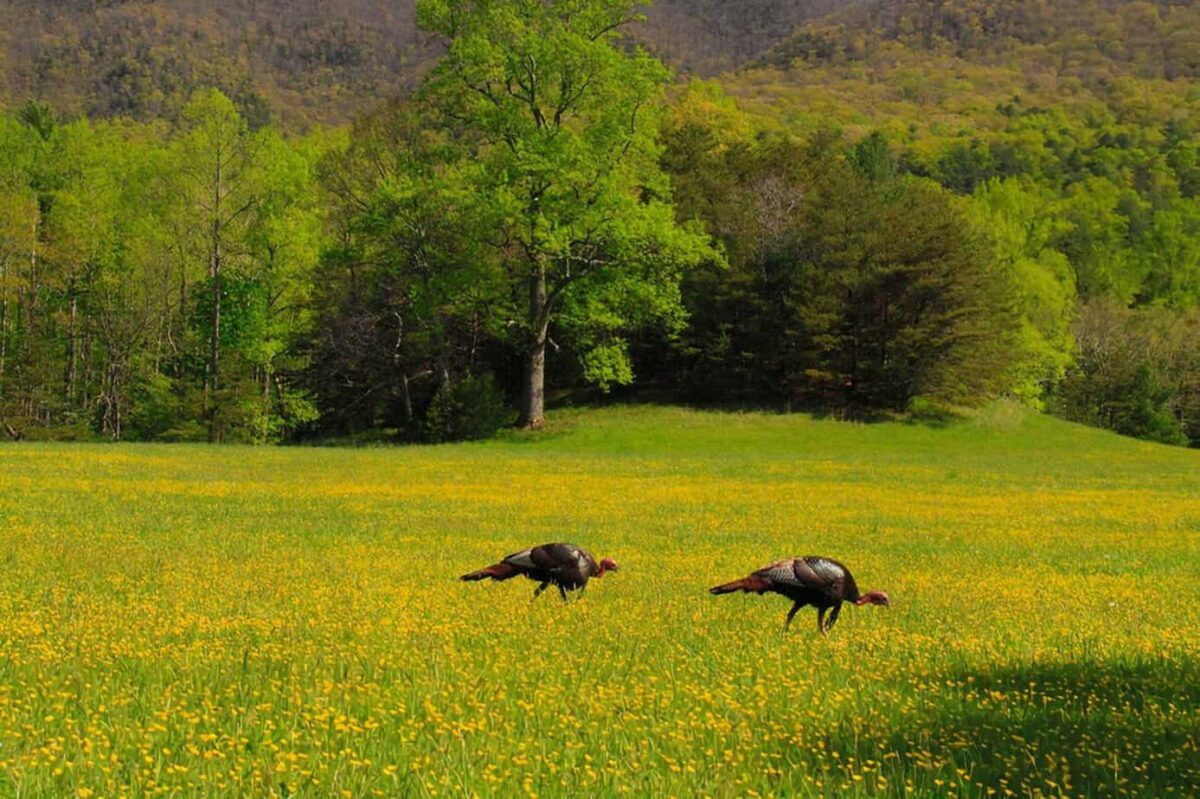Few things warm a turkey hunter’s heart more than seeing a hen with a brood of newly hatched poults. It is much more satisfying if the sighting occurs on your property.
My wife Beth and I have spent our entire lives hunting turkeys. If you’ve ever hunted wild turkeys, you know what I mean when I say it gets into your blood and often becomes an obsession. It did for us.
We were fortunate to have wild turkeys use and call our small Alabama farm home when we purchased it. But we desired more.
Hunting wild turkeys is more than just killing them. Some of our most memorable hunts were when the gobblers we were hunting came out on top. However, some of our favorite dinners have come from encounters that the gobblers lost. With this in mind, we began looking for methods to improve the property’s wild turkey habitat.
Prepare nesting zones
Wild turkey mating season can begin as early as February and last as late as May, depending on where you live. Soon after being bred, a hen begins looking for a spot to lay her eggs.
Hens typically prefer a nesting place in an area with somewhat forested vegetation. When she has decided on a location, she digs a shallow depression and fills it with leaves, sticks, and her own feathers to build her nest. Hens require a location that provides privacy and cover, as well as food and water nearby.
When Beth and I decided to do our part to assist turkey hens in nesting and rearing poults on our little farm, we relied on years of monitoring turkeys and using the property to help identify spots where hens preferred to nest.
Finally, we narrowed our search to three places with suitable nesting cover and a water source. To improve them, we began by picking small sections on the edge of hardwood drains and girdling the bark of undesirable trees such as sweet gum and hickory.
We also used a chainsaw to drop random trees to offer cover and hasten the natural regrowth of understory plants. Some trees were sawed down but remained attached to the stump.
These trees survive by retaining their leaves and providing instant cover. This is referred to as hinge cutting.
Clear travel corridors

We tilled pasture grass in another region in the spring. The pasture we chose was near a six-year-old planted pine stand. The natural vegetation of dog fennel, briars, ragweed, and sedge had regained the site by the fall.
Today, we manage this natural vegetation by mowing patches in the summer on a three-year cycle. This gives the area three unique ages of vegetation.
The oldest vegetation is optimal for nesting, while the youngest is lush with fresh growth and offers turkeys with travel corridors.
Tame the trees
Our final attempt concentrated on a 30-acre loblolly pine stand established…
